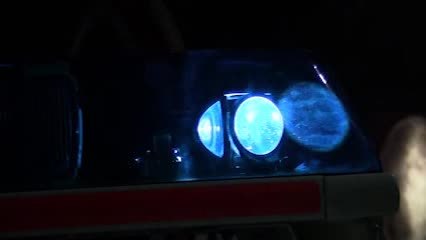Last Updated on June 22, 2023 by Ryan
The blue light in your car is an indicator that something needs attention. It could be a warning of low oil or coolant levels, a loose gas cap, a malfunctioning emissions system, or any other issue that requires immediate attention. The blue light typically appears on the dashboard and may even flash to indicate the urgency of the problem.
Depending on your vehicle’s make and model, you may also hear an accompanying sound such as a loud beeping noise when this happens. If you see the blue light illuminated, it’s best not to ignore it and take your car in for servicing as soon as possible.
The blue light in your car is a warning sign to alert you that something is not functioning properly. It could be anything from a low tire pressure, an electrical problem, or an oil leak. It’s important to take this warning seriously and have your vehicle checked out by a professional as soon as possible.
Ignoring the blue light can lead to more serious issues down the road that are expensive and dangerous for you and other drivers on the road.
What is the Blue Light on my Subaru Dashboard?
Blue Light in Car
Blue light in cars can be distracting for drivers and passengers alike. While some people may think that blue lights are there to improve visibility at night, they actually emit a type of short wavelength radiation that has been linked to increased eye strain and headaches. Additionally, blue light is known to interfere with the body’s natural circadian rhythm, leading to difficulty sleeping after long car rides.
As such, it is important for drivers and passengers to limit their exposure by avoiding direct contact with the source of the blue light when possible or using protective eyewear if necessary.
Can You Drive With Blue Coolant Light on
Driving with a blue coolant light on can be dangerous and should be avoided. If you see this light, it is indicative of an issue within the vehicle’s cooling system, which could mean that your engine is overheating or low on coolant. It is important to pull over safely as soon as possible to inspect the cause of the warning and take action accordingly.
Failing to do so may result in damage to your vehicle and potentially serious injury if left unchecked.
Blue Light in Car Windshield
Blue light in car windshields is a relatively new technology that helps to reduce glare, improve visibility, and make driving safer. The blue light is applied directly to the windshield as a thin coating of nanoparticles which help to filter out harmful UV rays while allowing visible light through. This helps drivers see better and reduces eyestrain from long drives, ultimately leading to fewer accidents on the road.
Blue Coolant Light Comes on When Car Starts
When a car is started, the blue coolant light may come on as an indication that there is an issue with the vehicle’s cooling system. This could mean that either the coolant level is low or it could indicate a more serious problem such as a faulty thermostat or broken water pump. If this warning light appears, it should be addressed immediately to prevent potential engine damage from overheating.

Credit: commons.wikimedia.org
What Does the Little Blue Light on My Car Mean?
The little blue light on your car is a notification that something in the vehicle needs attention. This could mean anything from an engine malfunction to a low fluid level, or even a warning about the brakes needing repair. It’s important to check your dashboard for more information about what this could mean and take action as soon as possible.
If you’re not sure what the issue is, it may be best to take your car into a mechanic so they can diagnose any potential issues and get them fixed promptly before they become bigger problems down the road.
What to Do When Blue Coolant Light Comes On?
When the blue coolant light comes on, it is important to take action immediately. The first step is to check your coolant levels; if they are low, you should top off the reservoir with a 50/50 mixture of antifreeze and distilled water. If the levels are fine, then there may be an issue with the cooling system or engine temperature sensor which will require further inspection.
Additionally, if your car has been running for extended periods of time in stop-and-go traffic or rough terrain, it might be helpful to let it rest for a bit before continuing driving. This will give the engine time to cool down and allow any air pockets that have built up in the radiator lines to dissipate safely without causing any damage.
Conclusion
In conclusion, understanding what the blue light in your car is can help you diagnose and take care of problems that arise. It’s important to be aware of the blue light for safety reasons, as it will inform you when something has gone wrong with your vehicle. By being familiar with its purpose and how it works, you can ensure a safer driving experience.



